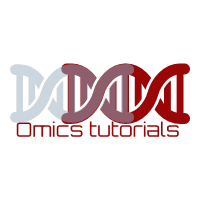
Free Course-Bioinformatics and Proteomics
February 16, 2009 Free Course-Bioinformatics and Proteomics: MIT OpenCourseWare
Free Course-Bioinformatics and Proteomics: MIT OpenCourseWare
Course Description
Proteomic analysis is an emerging field that utilizes algorithms, statistics, databases and other tools of bioinfomatics for analyzing large amounts of data for the purpose of improving the knowledge base in the study of genomics and proteins. ‘Bioinformatics and Proteomics’ is a free course provided by the MIT Department of Electrical Engineering and Computer Science and Professors Gil Alterovitz, Manoli Kellis and Marco Ramoni. Students are taught practical methods and techniques that will prepare them for the variety of tasks associated with the analysis, evaluation and interpretation of proteomic data. The lectures include a review of modern biology, sequence analysis and microarray expression data analysis. Bayesian methodologies and bioinformatics applications in the biotech industry are also discussed. Students investigate statistical models and stochastic processes in proteomics, signal processing for proteomics, biological methods, automation and robotics.
Proteomic analysis is an emerging field that utilizes algorithms, statistics, databases and other tools of bioinfomatics for analyzing large amounts of data for the purpose of improving the knowledge base in the study of genomics and proteins. ‘Bioinformatics and Proteomics’ is a free course provided by the MIT Department of Electrical Engineering and Computer Science and Professors Gil Alterovitz, Manoli Kellis and Marco Ramoni. Students are taught practical methods and techniques that will prepare them for the variety of tasks associated with the analysis, evaluation and interpretation of proteomic data. The lectures include a review of modern biology, sequence analysis and microarray expression data analysis. Bayesian methodologies and bioinformatics applications in the biotech industry are also discussed. Students investigate statistical models and stochastic processes in proteomics, signal processing for proteomics, biological methods, automation and robotics.
The materials for this course include downloadable lecture notes and lab assignments. There is also a reading list and an extensive collection of related resources.
















